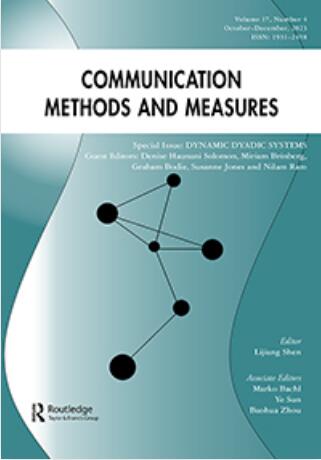通信科学中的强形式频率测试:原理、机遇和挑战
IF 3.7
1区 文学
Q1 COMMUNICATION
引用次数: 1
摘要
摘要本文讨论了“强形式”频繁度测试作为传播学中零假设测试的一种有用补充。在“强有力的形式”设置中,研究人员定义了(最小)理论兴趣的假设效应大小,并评估她的发现在多大程度上伪造或证实了这一特定假设。我们认为,“强形式”测试的想法与科学改革运动的理想紧密一致,在一般线性模型的背景下讨论了它的技术应用,并展示了如何计算和解释相关的P值样量。我们还提供了例子和模拟,以说明强大的形式设置需要对研究结果进行更细致的反思。此外,我们还讨论了一些陷阱,这些陷阱可能仍然阻碍了强形式测试的广泛采用。本文章由计算机程序翻译,如有差异,请以英文原文为准。
Strong-Form Frequentist Testing In Communication Science: Principles, Opportunities, And Challenges
ABSTRACT This paper discusses ‘strong-form’ frequentist testing as a useful complement to null hypothesis testing in communication science. In a ‘strong-form’ set-up a researcher defines a hypothetical effect size of (minimal) theoretical interest and assesses to what extent her findings falsify or corroborate that particular hypothesis. We argue that the idea of ‘strong-form’ testing aligns closely with the ideals of the movements for scientific reform, discuss its technical application within the context of the General Linear Model, and show how the relevant P-value-like quantities can be calculated and interpreted. We also provide examples and a simulation to illustrate how a strong-form set-up requires more nuanced reflections about research findings. In addition, we discuss some pitfalls that might still hold back strong-form tests from widespread adoption.
求助全文
通过发布文献求助,成功后即可免费获取论文全文。
去求助
来源期刊

Communication Methods and Measures
COMMUNICATION-
CiteScore
21.10
自引率
1.80%
发文量
9
期刊介绍:
Communication Methods and Measures aims to achieve several goals in the field of communication research. Firstly, it aims to bring attention to and showcase developments in both qualitative and quantitative research methodologies to communication scholars. This journal serves as a platform for researchers across the field to discuss and disseminate methodological tools and approaches.
Additionally, Communication Methods and Measures seeks to improve research design and analysis practices by offering suggestions for improvement. It aims to introduce new methods of measurement that are valuable to communication scientists or enhance existing methods. The journal encourages submissions that focus on methods for enhancing research design and theory testing, employing both quantitative and qualitative approaches.
Furthermore, the journal is open to articles devoted to exploring the epistemological aspects relevant to communication research methodologies. It welcomes well-written manuscripts that demonstrate the use of methods and articles that highlight the advantages of lesser-known or newer methods over those traditionally used in communication.
In summary, Communication Methods and Measures strives to advance the field of communication research by showcasing and discussing innovative methodologies, improving research practices, and introducing new measurement methods.
 求助内容:
求助内容: 应助结果提醒方式:
应助结果提醒方式:


